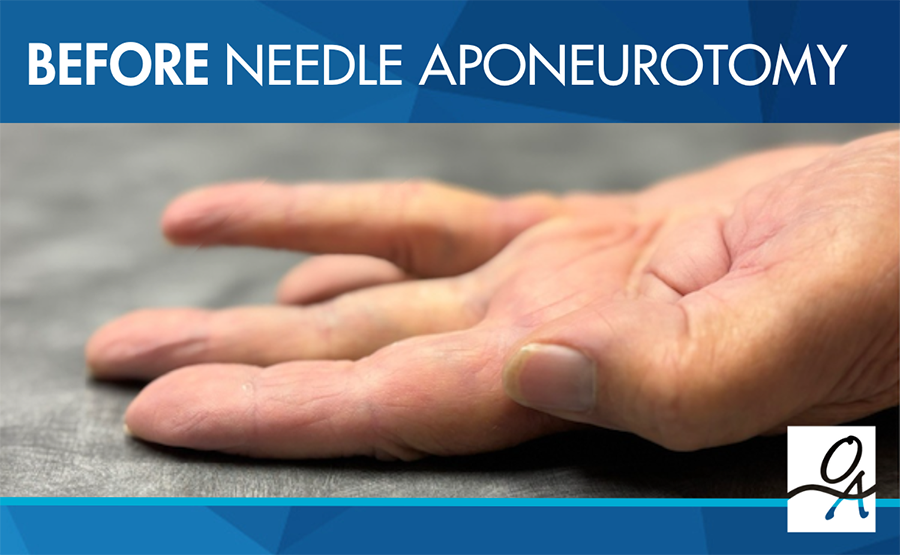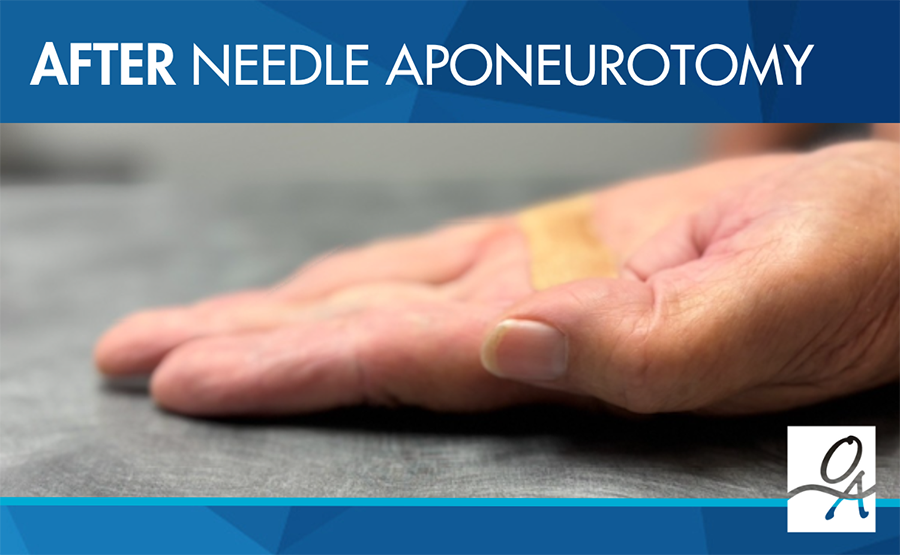Dupuytren’s Contracture
Dupuytren’s contracture occurs when tissue in the palm thickens and forms firm cords beneath the skin. This may cause one or more fingers to slowly bend toward the palm. Some people only notice small lumps that never worsen, while others develop tighter cords that make everyday activities—like shaking hands, putting on gloves, or placing the hand flat—more difficult.
Although there’s no way to prevent Dupuytren’s contracture, the condition can be treated to restore hand function and reduce limitations in daily life.
Treatment Options Available
At Orthopedic Associates of Port Huron, our fellowship-trained hand surgeons, Dr. Emily Tan, Dr. Chad Amato, and Dr. Rajesh Makim, provide advanced treatments for Dupuytren’s contracture. They carefully evaluate each patient’s condition and recommend the treatment option that will best support individual needs and goals.
- Needle Aponeurotomy: In this incisionless procedure, the hand is numbed with local anesthesia, and a small needle is carefully used to release the tight, cord-like tissue pulling the fingers toward the palm. Performed through tiny punctures, this treatment can restore mobility with minimal recovery time—no surgery required.


- XIAFLEX® Injections: XIAFLEX is a treatment injected directly into the collagen cord causing the finger contracture. By targeting and breaking down the cord, it helps restore mobility, provides relief within days, and offers many patients an effective alternative to surgery.
- Surgical Excision: In more advanced cases, surgery may be recommended to remove the affected tissue causing the contracture. This option has a lower recurrence rate than nonsurgical treatments but typically involves a longer recovery.
Compare Treatment Options
The chart below compares needle aponeurotomy, XIAFLEX injections, and surgery to help you understand what to expect from each treatment option.
|
Treatment |
Needle Aponeurotomy |
XIAFLEX (Collagenase Injection) |
Surgical Excision |
|---|---|---|---|
|
Location |
Two quick office visits |
Three to four office visits |
Operating room with anesthesia, plus three to four office visits |
|
Pain |
Minimal—a few pinpricks for numbing and some bruising for two days |
Mild—a few pinpricks at each visit and swelling/pain for one to two weeks |
Moderate—prescription pain medicine usually needed for one to three days |
|
Therapy |
Rarely needed |
Rarely needed |
Often recommended for six to eight weeks |
|
Recurrence |
50% of people will regrow the cord |
25 to 50% of people will regrow the cord |
25% of people will regrow the cord |
|
Severity of Deformity |
Mild to moderate |
Mild to moderate |
Moderate to severe |
Take the First Step Toward Relief
If you’re experiencing the symptoms of Dupuytren’s contracture, schedule a consultation with one of our hand surgeons today. Our team will work with you to determine the treatment that best fits your condition, lifestyle, and goals. Please call (810) 985-4900 or request an appointment online.


